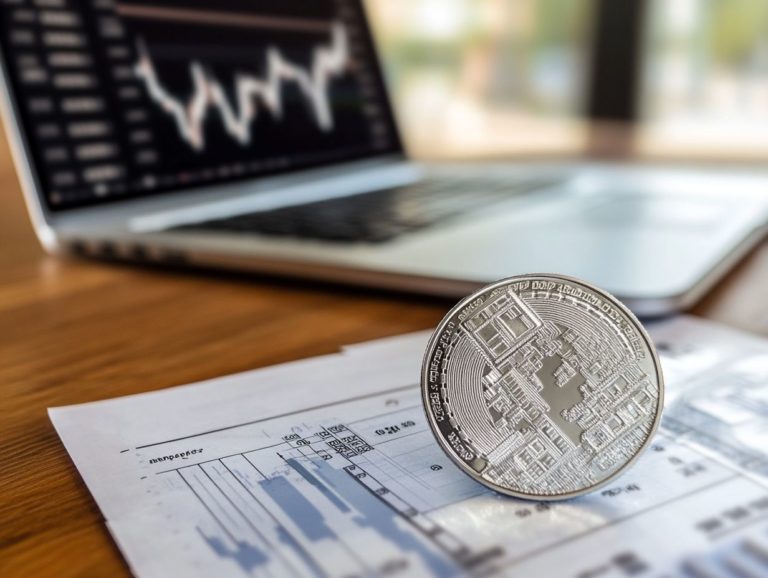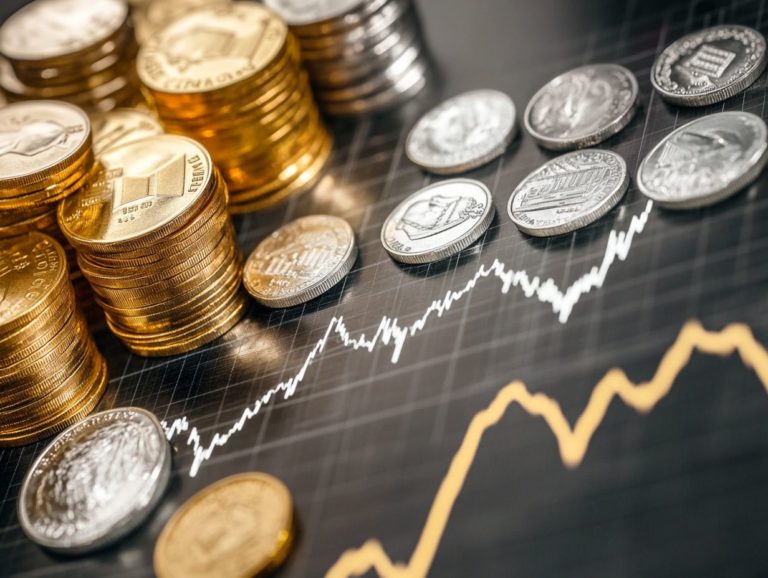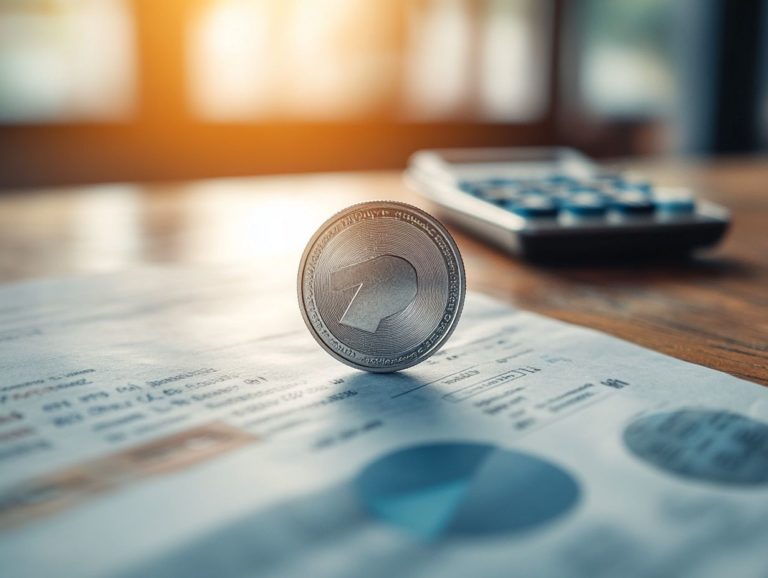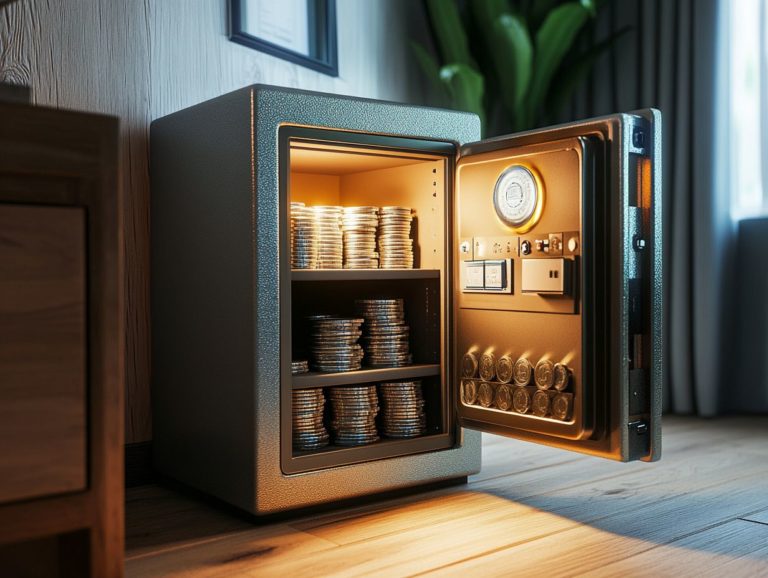How Economic Conditions Affect Silver Prices
Silver has long been viewed as a precious asset. However, truly grasping its price fluctuations necessitates a deeper examination of the economic landscape.
From global events to pivotal economic indicators, multiple factors sway the silver market. This article delves into the intricate relationship between economic conditions and silver prices, highlighting significant events that can trigger shifts in value.
This article also offers strategies for investing in silver during tough economic times. Stay informed to make proactive investment choices.
Contents
- Key Takeaways:
- Understanding Silver Prices
- Economic Conditions and Silver Prices
- Global Economic Events that Affect Silver Prices
- Indicators of Economic Conditions and Their Effect on Silver Prices
- Strategies for Investing in Silver during Economic Uncertainty
- Frequently Asked Questions
- How do economic conditions affect silver prices?
- What are some economic indicators that can affect silver prices?
- How do interest rates impact silver prices?
- How does the stock market influence silver prices?
- What is the relationship between inflation and silver prices?
- How does global economic growth impact silver prices?
Key Takeaways:
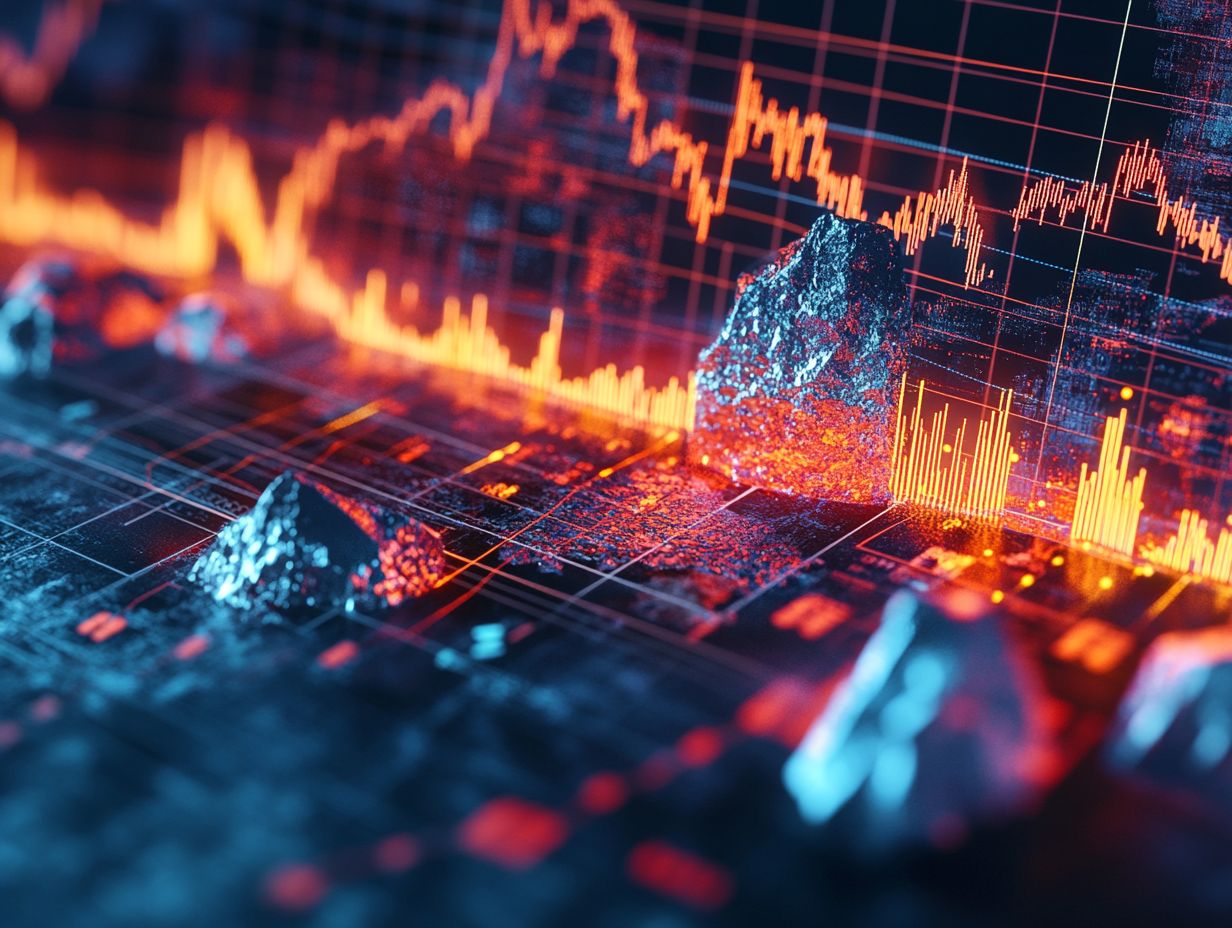
- Economic conditions play a significant role in determining the price of silver, making it a valuable indicator of the state of the economy.
- Global economic events, such as inflation and political instability, can greatly impact the price of silver.
- Investors should pay attention to key economic indicators, such as GDP and interest rates, to understand how they may affect silver prices and make informed investment decisions.
Understanding Silver Prices
Understanding silver prices requires analyzing market dynamics. Supply and demand, along with economic conditions and technology, all shape silver s value.
As an industrial commodity and investment, fluctuations in silver prices can impact both investors and industries. Sectors like technology and jewelry heavily depend on silver.
Factors that Influence Silver Prices
Several factors influence silver prices, and it’s essential to understand them. Fluctuations in supply and demand, shifts in economic trends, and government policies aimed at stabilizing the market all play significant roles.
You may have noticed that industrial demand for silver has surged in recent years. This is fueled by its critical applications in electronics and the renewable energy sector.
Investment trends also reveal a growing interest in silver. Many view it as a hedge against economic uncertainty, making it a safe haven during turbulent market periods.
Government policies can significantly impact the market. For example, easing monetary policies often lead to increased market speculation, which in turn affects silver market dynamics.
Given these interconnected elements, it’s crucial for you as an investor or analyst to stay attentive to the broader economic landscape when evaluating silver’s market performance.
Economic Conditions and Silver Prices
Economic conditions are vital in shaping silver prices. Factors like inflation rates, government rules, and general market health directly influence both investment demand and silver’s performance.
When economic uncertainty looms, you may find that investors flock to silver as a safe haven asset. This can drive up demand and subsequently raise prices.
Conversely, during favorable economic conditions, the demand for silver may diminish in both industrial applications and investment portfolios.
This interplay underscores the nuanced relationship between economic health and silver pricing, reminding you just how interconnected these factors truly are.
The Relationship between Economic Conditions and Silver Prices
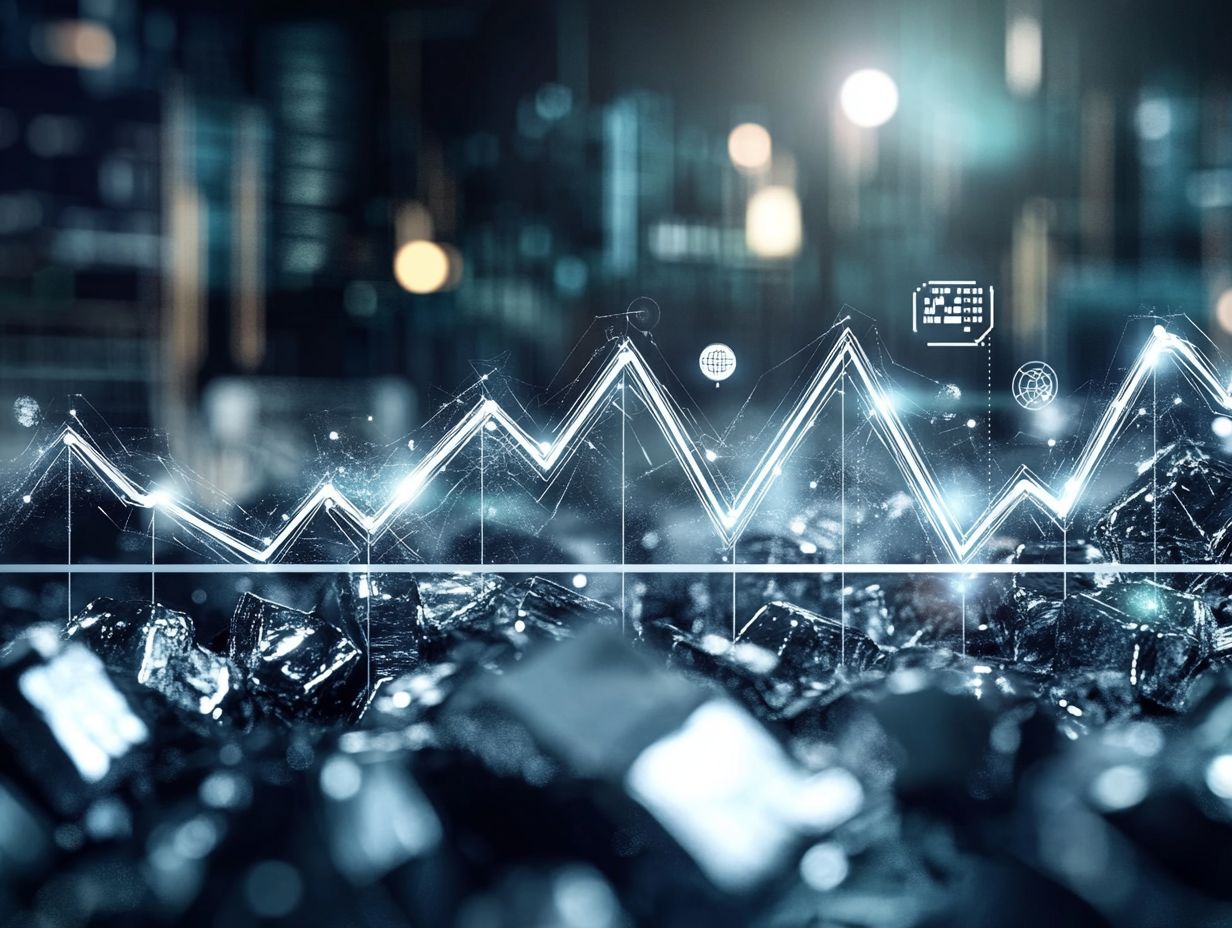
The relationship between economic conditions and silver prices is shaped by demand pressures that ebb and flow with economic trends and inflation rates.
When GDP growth takes a dip, it often stirs uncertainty in investor sentiment. This prompts a rise in interest for silver as a safe investment option, an investment that people turn to in times of economic trouble.
Conversely, low unemployment rates can indicate a thriving economy. This may lead to a decline in demand for precious metals as investors gravitate toward riskier assets like stocks.
As inflation rises, the costs of goods typically follow suit. This pushes both individuals and institutions to view silver as a safeguard against diminishing purchasing power.
These dynamics illustrate how shifts in economic indicators can create a ripple effect, influencing market behavior and ultimately impacting silver pricing.
Global Economic Events that Affect Silver Prices
Global economic events think financial crises, geopolitical tensions, and major policy shifts can significantly sway silver prices. They do this by shifting market sentiment and shaping investor behavior.
These occurrences often spark heightened speculation around silver as a safe investment option, leading to price fluctuations that reflect the prevailing sense of economic stability or uncertainty.
You can uncover valuable insights into the potential risks and rewards of investing in silver by examining historical instances where global conditions have influenced silver prices.
Examples of Economic Events and Their Impact on Silver Prices
Historical economic events, like the financial crisis of 2008 and the COVID-19 pandemic, have significantly influenced silver prices. This reveals the metal’s unique dual role as both an industrial resource and a safe haven investment.
In these challenging times, many investors turned to silver, prompting a dramatic shift in market dynamics. The surge in investment demand for silver, especially among retail investors, highlighted a growing belief in its intrinsic value and potential for long-term appreciation.
For example, as available liquidity expanded due to various stimulus measures, the appeal of silver as a hedge against inflation became increasingly compelling.
Disruptions in mining and manufacturing only intensified supply constraints, further driving price volatility. This intricate interplay between economic instability and silver’s allure emphasizes its significance in a well-rounded investment portfolio.
Indicators of Economic Conditions and Their Effect on Silver Prices
Key economic indicators, including interest rates, inflation data, and employment figures, are essential for evaluating the economic landscape that can impact silver prices and shape overall market sentiment toward investment opportunities.
Observing fluctuations in these indicators offers invaluable insights into potential future trends in the silver market. This helps you navigate your investment decisions more effectively.
If interest rates rise, you might notice a dip in investment demand for silver. On the other hand, high inflation could spark a heightened interest in silver as a reliable store of value.
Key Economic Indicators to Monitor
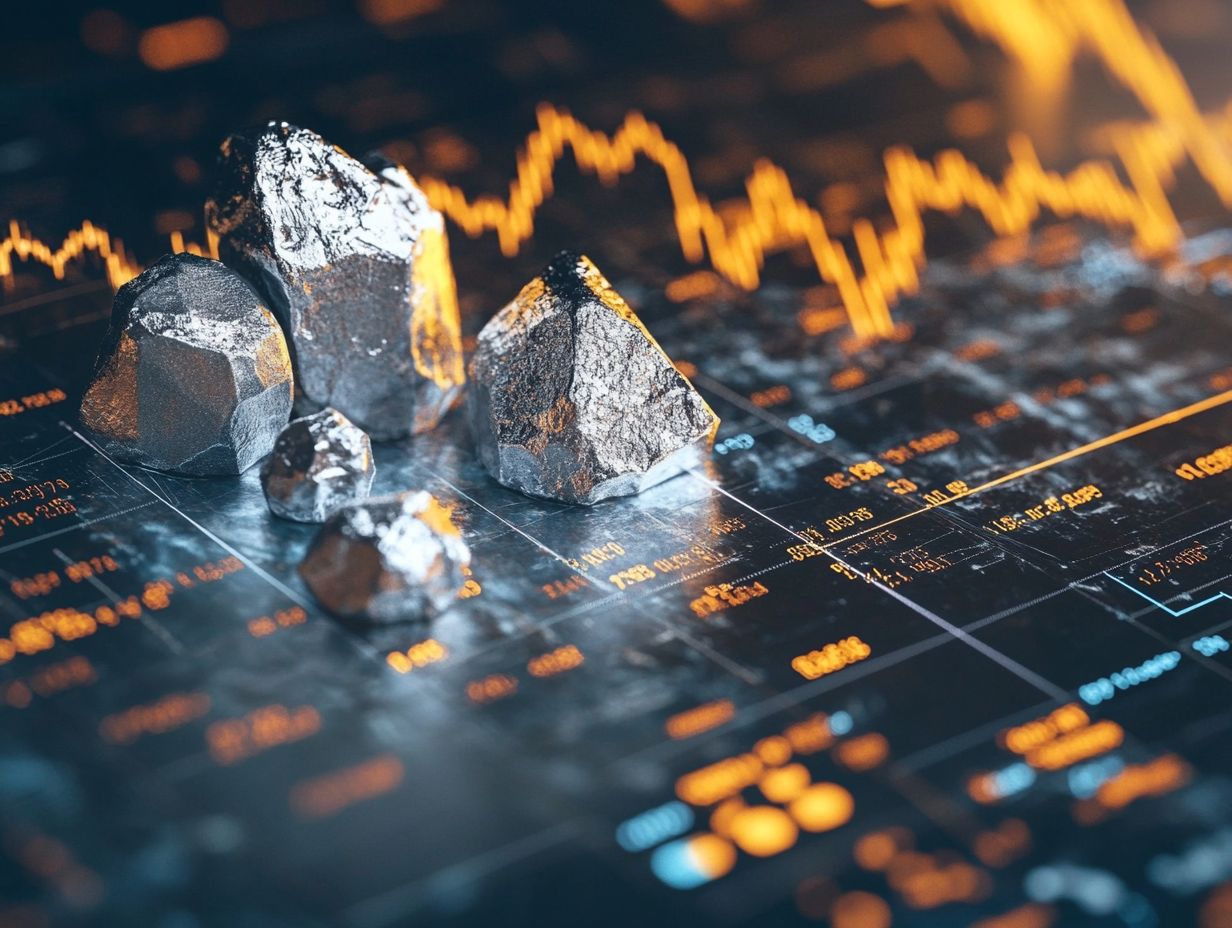
Monitoring key economic indicators like inflation rates, interest rates, and GDP growth is crucial for grasping their impact on silver prices and investment demand.
By paying close attention to these factors, you can gain valuable insights that empower you to make informed decisions.
For example, when inflation rises, the demand for precious metals, including silver, often increases as investors seek a hedge against currency devaluation.
Simultaneously, fluctuations in interest rates can change the opportunity cost of holding silver instead of earning interest elsewhere. This means the potential benefit you miss out on by choosing to invest in silver.
Understanding GDP growth also provides essential context regarding economic health and investor sentiment. Use this information to your advantage to optimize your strategies, minimizing risks while seizing potential price movements in the silver market.
Keep an eye on these indicators to make smarter investment choices and seize the opportunities in the silver market!
Strategies for Investing in Silver during Economic Uncertainty
Investing in silver during times of economic uncertainty requires careful attention to market conditions and an understanding of silver s role as a safe haven asset. This precious metal often attracts investors seeking refuge from volatility, providing stability when it s most needed.
During economic turmoil, silver becomes a popular choice as a hedge against inflation and currency devaluation. Therefore, crafting sound investment strategies that leverage these trends is essential.
By identifying optimal entry points and using varied investment approaches, you can navigate the complexities of silver investments effectively.
Navigating the shifting landscape of silver prices requires a sophisticated approach that combines market analysis, an understanding of economic conditions, and strategic investment planning.
Regularly review reports and statistics related to industrial demand and global supply, as these factors significantly influence silver’s valuation. Utilizing tools like price tracking apps and market alerts will keep you informed about sudden changes. Subscribing to reputable financial news outlets is crucial for gaining timely insights on geopolitical events and economic indicators that shape market trends.
Implementing a diversified investment strategy that includes various asset classes, like precious metals and Exchange-Traded Funds (ETFs), can help you mitigate risk. Adopting a proactive mindset empowers you to make informed decisions in this dynamic market.
Frequently Asked Questions
How do economic conditions affect silver prices?

Economic conditions directly impact silver prices as they influence the supply and demand for the metal. When the economy is strong, there is often an increase in industrial demand for silver, driving up prices. Conversely, during economic downturns, investors may seek silver as a safe-haven asset, leading to a rise in prices.
What are some economic indicators that can affect silver prices?
Key economic indicators impacting silver prices include inflation rates, interest rates, stock market performance, and global economic growth. Changes in these indicators can signal shifts in the supply and demand for silver, subsequently affecting its price.
How do interest rates impact silver prices?
Interest rates significantly influence silver prices. When interest rates are low, investors often prefer silver, which may offer higher returns. This increased demand can drive up silver prices. Conversely, when interest rates rise, investors may turn to other assets, leading to a decrease in silver prices.
How does the stock market influence silver prices?
The stock market can notably affect silver prices. When the stock market performs well, investors may favor stocks over silver, resulting in lower prices. However, during periods of uncertainty or market volatility, investors may turn to silver as a safe-haven asset, causing prices to rise.
What is the relationship between inflation and silver prices?
Inflation is closely linked to silver prices as the metal is often viewed as a hedge against inflation. When inflation rates increase, investors often seek silver to protect their wealth from depreciation. This heightened demand can lead to higher silver prices.
How does global economic growth impact silver prices?
Global economic growth significantly influences silver prices. When the global economy expands, there is usually a rise in industrial demand for silver, driving prices higher. Additionally, increased consumer spending during global growth may boost demand for silver jewelry, further affecting prices.
Explore our investment guides to start your silver journey today!










